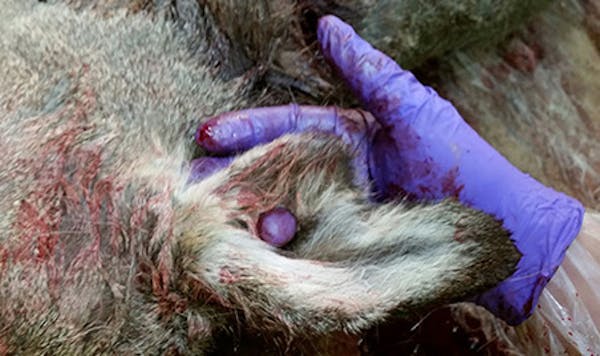Minnesota is wasting millions of dollars on trout habitat projects in the Driftless Area by forcing contractors to use woody debris instead of rock to protect stream banks that are washing out in spectacular fashion, a pair of rehabbers say.
Their criticism, amplified on a website, is gaining traction in funding and management circles in St. Paul.
"We have streams tearing themselves apart,'' said Gary Sobotta of Rochester. "Millions of dollars are being washed away.''
Sobotta and Tom Dornack, business partners in a trout stream rehabilitation company, went public with their gripes earlier this year. "We are raising a stink because what is happening needs to be reviewed,'' they wrote on a trout forum discussion board.
In response, the Lessard-Sams Outdoor Heritage Council — the biggest funder of southeastern Minnesota trout habitat projects — organized a field trip to view damage.
"It was really an eye-opener of a day,'' said Mark Johnson, the council's executive director.
The group, including a contingent from the Department of Natural Resources, followed Sobotta to a handful of fishing locations south of Interstate 90, where high water ravaged stream bends that had been stabilized with tree trunks and root wads.
To follow up on the tour, Johnson has scheduled a public meeting in June to hear from the DNR, Trout Unlimited and others. Sobotta said he's been impressed with the response.
"Hopefully it will make an impact,'' he said.
Poster child
A stretch of Rush Creek north of Rushford, Minn., is a prime example of failure. In 2018, Minnesota Trout Unlimited spearheaded a $200,000 habitat improvement project on the creek using Legacy Amendment dollars assigned by Lessard-Sams.
The project covered a mile of stream and was styled in the "natural channel design'' favored by the Ecological and Water Resources Division of DNR. Parts of the habitat work were blown out by floodwaters this year, and repairs will cost around $100,000.
John Lenczewski, executive director of Minnesota Trout Unlimited, said recent washouts and the recurring rising of water in the Driftless Area are teaching lessons to everyone. In the Rush Creek example, he said, there's no doubt in hindsight that more rock should have been used.
"We've really discovered some issues this year where we should have used more rock in certain situations,'' Lenczewski said.
He said Trout Unlimited has been under pressure in a more general sense from the DNR's "eco-waters'' division to incorporate more wood and less rock in habitat projects. He said there have even been cases when DNR fisheries personnel have wanted to use more rock, only to be denied by the agency's permitters.
"I'm optimistic there will be greater flexibility in the future,'' Lenczewski said.
He said it's an oversimplification to say all habitat improvement projects in the Driftless Area should be accomplished with rock or durable lumber structures. There's a place for woody debris, and those materials can be long-lasting, he said.
But the DNR's dislike for methods that lock channels in place instead of allowing them to naturally meander across the flood plains isn't always well suited to the Driftless Area, he said.
DNR fisheries and eco-waters officials issued a statement Friday saying the agency continues to learn from "both the successes and the setbacks'' of 125 projects completed over the past 25 years. The statement said repairs are needed for recent washouts on two projects, but three others in the region held up "very well'' to this spring's high flows.
The science behind DNR stream restorations blends principles of biology, water quality, hydrology, sediment loads and proper channel configuration, the statement said.
Geologist Jeff Broberg, who is president of the Minnesota Trout Association, said in a letter to the Lessard Sams Council that Driftless Area habitat projects were durable and effective when rock and wood structures were used intensively to line channels and banks.
He said those practical methods boosted trout populations but were abandoned about 10 years ago for the "new eco-services approach.''
"The demand for a new natural style ... ignores what we learned decades ago,'' Broberg said in his letter.
Lenczewski said it's important to remember that losses haven't been catastrophic.
"I agree that durability is important and we're taking this to heart,'' he said. "But the sky's not falling.''
